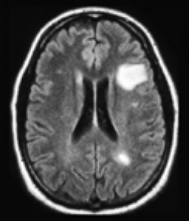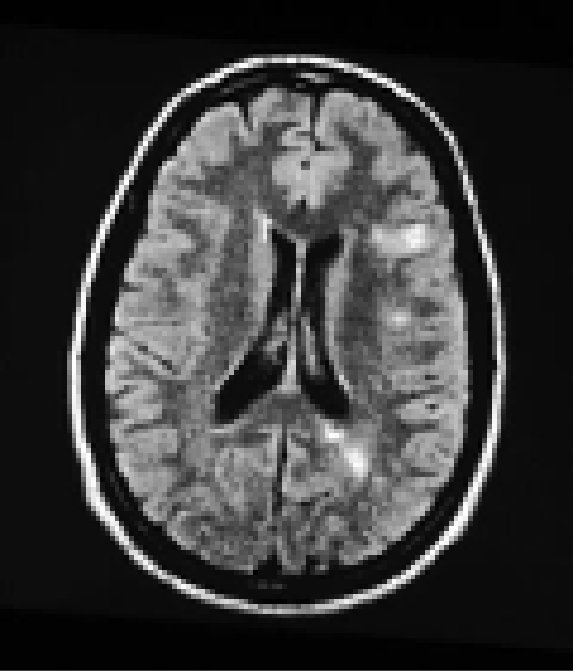
IDENTIFYING PATIENT TRANSITIONS IN MULTIPLE SCLEROSIS
Mary,* 37 Years
Diagnosed with RRMS in 2015
A high school science teacher who initally presented in 2014 with leg weakness, foot drop, and a history of optic neuritis. Mary is currently on disease modifying therapy.
What is Mary's current Diagnosis?
Expanded Disability Status Scale (EDSS)2

Sustained progression of disease is predicted by a minimum score of 4,3 and an increase in EDSS score of at least one point (for scores ≤5.5), measured over two time points, at least three months apart.4
Patient Notes*
Relapses
-
One relapse in the past year
-
Resolved symptoms:
-
Leg muscle weakness
-
Balance issues
-
Current Symptoms
-
Double vision
-
Balance issues
-
Numbness and tingling in the fingers
-
Leg pain
-
Increasing fatigue
-
Difficulty with processing information
Functioning
Symptoms have impacted Jennifer's ability to care
for her children and other daily activities
I'm afraid to discuss progression with my doctor—I don't want to discuss it. I don't want to find out that I am progressing. The thought of transitioning to SPMS from my current diagnosis, which I've known for years, frightens me. It's an unknown, even though I've been involved with the MS community for so long.1**
**Actual patient testimonial.
Patient History*
Clinical data6 from 6 months ago
Lab work
- A lumbar puncture demonstrated oligoclonal bands and mildly elevated CSF protein
Evoked potentials
- Somatosensory evoked potentials (SSEPs) normal
T25FW7,8
3.9
Modified Fatigue Impact Scale9,10
35
Total Score
Brain MRI
Multiple periventricular lesions
Permission granted by Medscape5 |
Spinal MRI
Not available
|
Current Test Results*
Current results
Lab work
- CSF not available
Evoked potentials
- SSEPs within normal limits
T25FW7,8
 3.9
3.9
Modified Fatigue Impact Scale9,10
 35
35
Total Score
Brain MRI
MRI of the head 3 months later
Permission granted by Medscape5 |
Spinal MRI
Not available
Permission granted by Springer International Publishing11 |
*Not a real patient.
CSF, cerebrospinal fluid; EDSS, Expanded Disability Status Scale; MRI, magnetic resonance imaging; RRMS, relapsing-remitting multiple sclerosis; SSEP, somatosensory evoked potential; T25FW, timed 25-foot walk.
-
Burtchell J, Fetty K, Miller K, Minden K, et al. Two sides to every story: Perspectives from four patients and a healthcare professional on multiple sclerosis disease progression. Neurol Ther. 2019;8:185-205.
-
Kurtzke JF. Rating neurologic impairment in multiple sclerosis: An expanded disability status scale (EDSS). Neurology. 1983;33(11):1444-1452.
-
Lorscheider J, Buzzard K, Jokubaitis V, et al. Defining secondary progressive multiple sclerosis. Brain. 2016;139(Pt 9):2395-2405.
-
Kalincik T, Cutter G, Spelman T, et al. Defining reliable disability outcomes in multiple sclerosis. Brain. 2015;138(Pt 11):3287-3298.
-
Luzzio C. Multiple sclerosis. Accessed March 13, 2020. https://emedicine.medscape.com/article/1146199
-
Tur C, Moccia M, Markhof F, et al. Assessing treatment outcomes in multiple sclerosis trials and in the clinical setting. Nat Rev Neurol. 2018;14(2):75-93.
-
Fischer JS, Jak AJ, Kniker JE, et al. Multiple Sclerosis Functional Composite (MSFC). Accessed March 29, 2020. Administration and Scoring Manual. https://www.nationalmssociety.org/NationalMSSociety/media/MSNationalFile...
-
Phan-Ba R, Pace A, Calay P, et al. Comparison of the timed 25-foot and the 100-meter walk as performance measures in multiple sclerosis. Neurorehabil Neural Repair. 2011;25(7):672-679
-
Ritvo PG, Fischer JS, Miller DM, et al. Multiple Sclerosis Quality of Life Inventory: A User’s Manual. National Multiple Sclerosis Society. New York, NY:1997;47-49. Accessed March 27, 2020. https://www.nationalmssociety.org/For- Professionals/Researchers/Resources-for- Researchers/Clinical-Study-Measures/Multiple- Sclerosis-Quality-of-Life-Inventory-(MSQ
-
Hadjimichael O, Vollmer T, Oleen-Burkey M. Fatigue characteristics in multiple sclerosis: The North American Research Committee on Multiple Sclerosis (NARCOMS) survey. Health Qual Life Outcomes. 2008;6:100
-
Eckstein C. Established relapsing-remitting multiple sclerosis. In: Giacomini PS, ed. Case Studies in Multiple Sclerosis. Springer International Publishing; 2017:35-57
-
Multiple Sclerosis Trust. Describing fatigue to others. Accessed March 6, 2020. https:// www.mstrust.org.uk/news/views-and-comments/ describing-fatigue-other
-
Benedict RHB, DeLuca J, Phillips G, et al. Validity of the Symbol Digit Modalities Test as a cognition performance outcome measure for multiple sclerosis. Mult Scler J. 2017;23(5):721-733
-
Zivadinov R, Bakshi R. Role of MRI in multiple sclerosis II: Brain and spinal cord atrophy. Front Biosci. 2004;9:647-664
-
Science Photo Library. Accessed March 30, 2020. https:www.sciencephoto.com/media/779202/view

